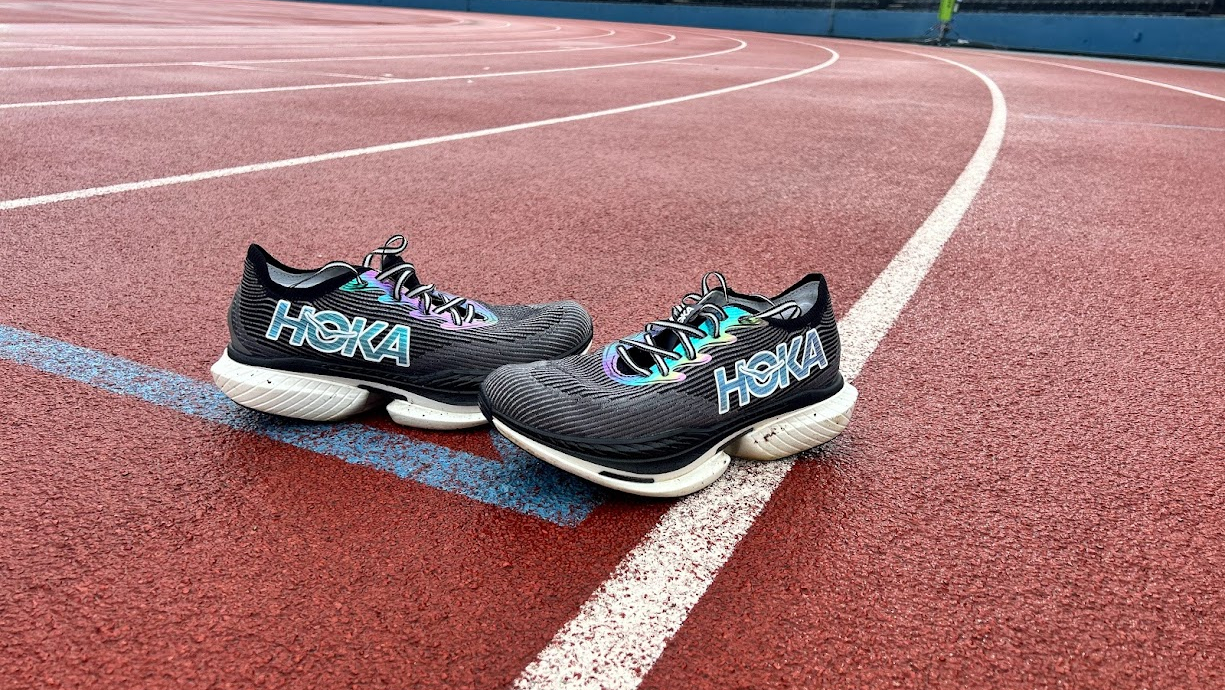Tom's Guide Verdict
The Cielo X1 is another great Hoka racing shoe designed to rival the Nike Alphafly for extended races and long-distance training sessions. There's enough bounce for a lively, comfortable ride, but it's not the lightest shoe around.
Pros
- +
Bouncy, lively ride
- +
Quick turnover from heel to toe
- +
Can work for short and long distances
Cons
- -
Unstable design not ideal for slower speeds
- -
Lacing system isn't the tightest
- -
Stiff upper makes them tough to put on
Why you can trust Tom's Guide
You don't often see Hoka shoes at elite races, but that may change with the launch of the Cielo X1. This new running shoe is designed for road racing, and the company has gleaned insight from its elite running to make a durable shoe to take on Nike, Adidas, and Asics.
It combines familiar racing shoe ingredients, like a carbon plate and PEBA foam, and merges them with Hoka’s signature design traits like an early-stage Meta-Rocker to give this World Athletics-approved shoe appeal to those who want something to go really fast in.
So, is the Hoka Cielo X1 one of the best running shoes for racing right now? I’ve had a prototype version to test for over a month, using it as part of my London Marathon training while fitting in some race time to find out if the Cielo X1 is a shoe to get really excited about.
Hoka Cielo X1 reivew: price and availability
The Hoka Cielo X1 launched on February 1st, 2024, and went on sale for $270/£250. That’s more expensive than Hoka’s other race day option and one of the best carbon fiber running shoes, the Rocket X2, which costs $250/£220. That does mean it’s cheaper than Nike’s Alphalfy 3 ($285/£285), though more expensive than Nike’s Vaporfly 3 ($250/£240).
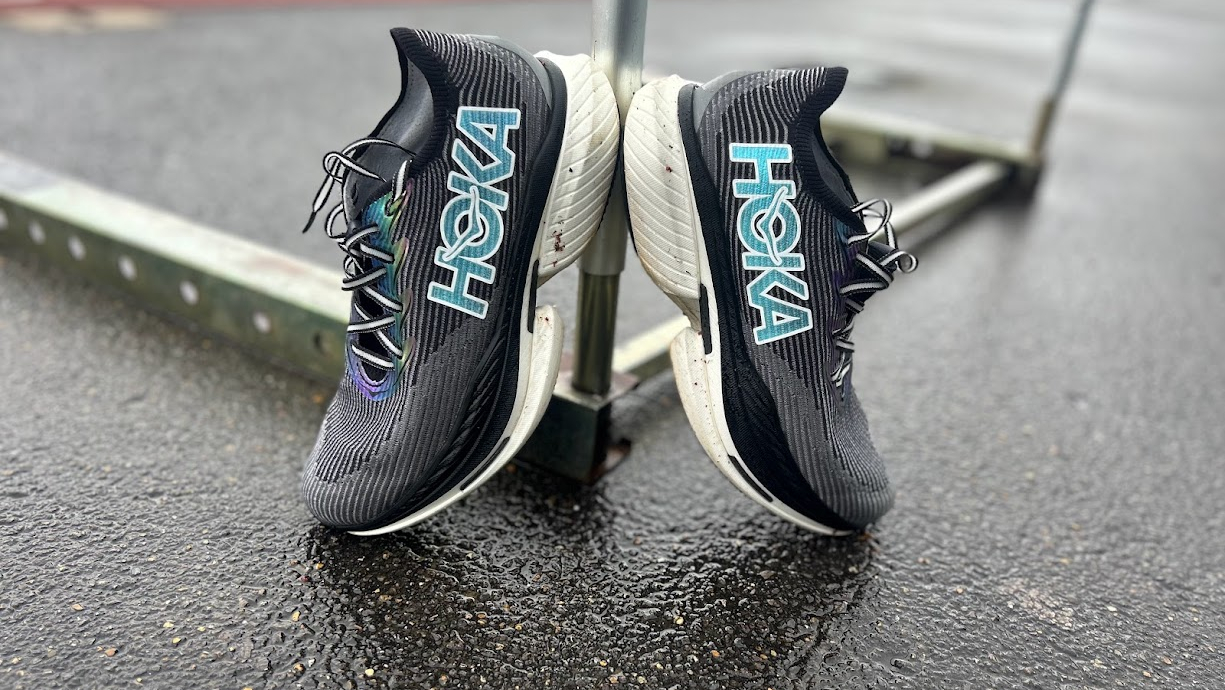
Hoka Cielo X1 review: design and fit
The Cielo X1 is an entirely new shoe in its Cielo line, and unlike the similarly peppy Cielo Road that I tested last year, this feels like one that’s better built to let you go speedy over longer distances.
The shoe has a 7mm drop and a stack height of 40mm at the heel and 33mm at the forefoot. The Rocket X2 has a 5mm drop in comparison, which tells you that the Cielo X1 should appeal to those who land heel first when they run.
Meanwhile, the Nike Alphafly 3 has an 8mm drop and a stack height of 40mm at the heel and 32mm at the forefoot, so that's another indicator that the X1 is aimed at Nike’s marathon racer.
Fit-wise, they’re definitely in keeping with Hoka’s typically more narrow approach and fit like a lot of its speed-focused shoes. I wear a UK size 8/US size 9, and that’s typically the size that works best for me in other Hoka shoes.
Fortunately, I do have quite skinny feet and I’ve had no issues wearing the Cielo X1, but it’s definitely going to be a squeeze for those with wider feet. I wouldn’t go down or up a size based on my testing.
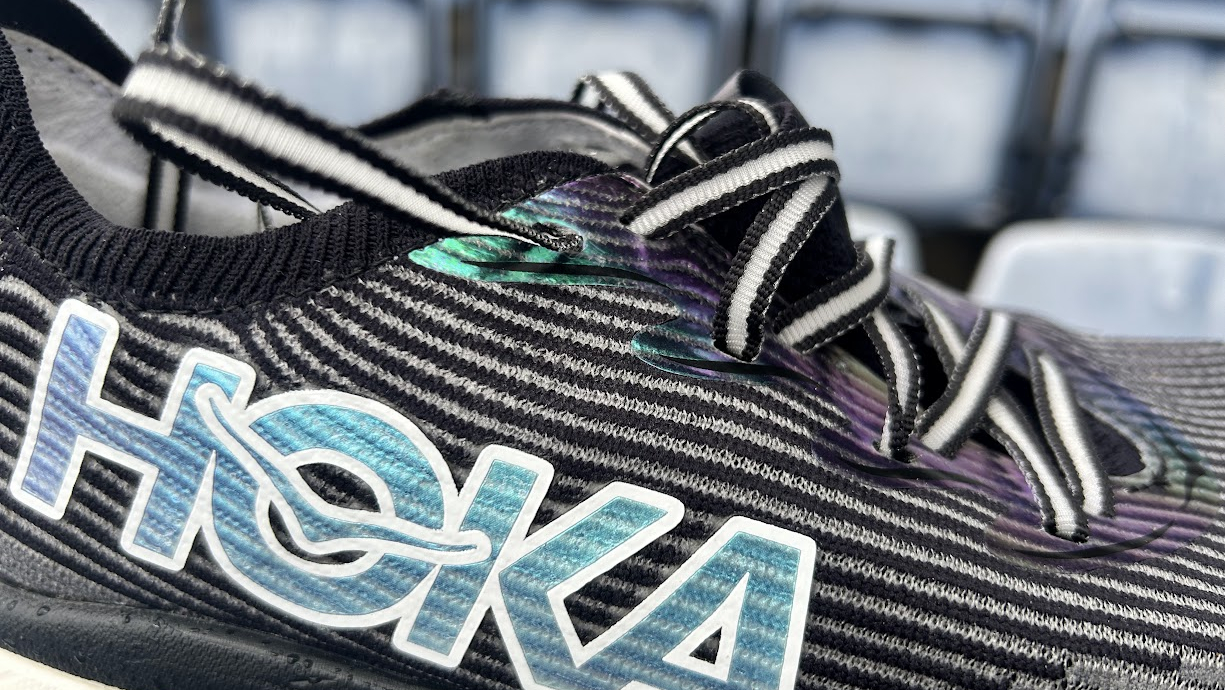
Upper
Hoka switched the mesh upper used on the Cielo Road and the Rocket X2 for a knitted one that still keeps things light up top but is definitely a stiffer, more structured upper and isn’t the easiest to quickly get your feet into.
Once they’re in, though, there’s ample room up front in the toes to stop things from feeling cramped, good hold at the midfoot, and some internal padding in the heel interior to keep things supported further back and prevent any unwelcome heel rubbing.
The main aim is to keep things light, so there are lightweight materials in the main body and upper, while the laces are flat and more plastic-feeling. However, there's a more substantial gusseted knit tongue for comfort on the top of your foot.
Midsole
PEBA is quickly becoming the foam of choice for top-tier racing shoes, with Nike and On using it in several midsoles to good effect. Hoka adds a double layer here (as it does in the Rocket X2 and Cielo Road) to give it a bounce and high-energy return to keep your legs fresher for longer.
The top layer is softer compared to the bottom layer that sits below the propulsive winged carbon plate, offering a slightly firmer feeling layer to provide some power.
Hoka has also cut out part of that midsole that it says keeps the weight down while keeping the shoe stable, too. However, the UK size 8/US size 9 I tested weighed 242g/8.5oz, which is heavier than the Alphafly 3 and Hoka’s Rocket X2 (211g).
This cut-out midsole design is something Nike has adopted on its Vaporfly 3 and earlier iterations of the Alphafly, and there are definitely hallmarks of the Alphafly with the Cielo X1’s design that makes the shoe look like it’s split into two sections.
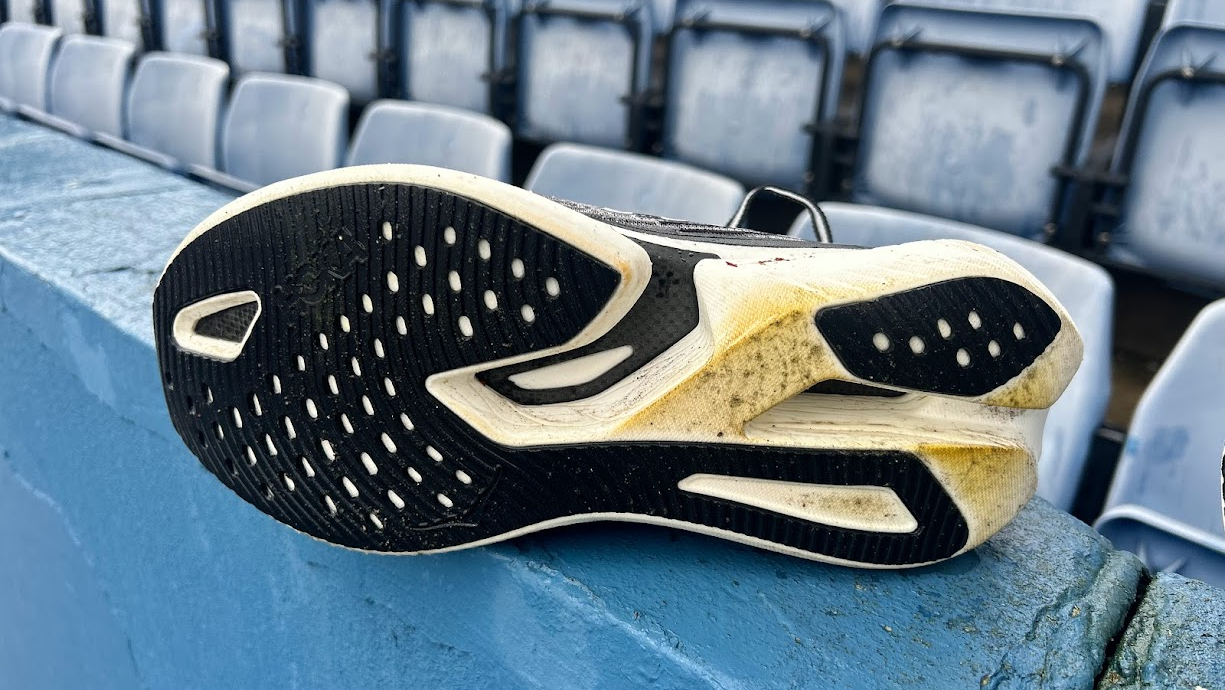
Outsole
The cut-out design extends to the outsole, with part of the midsole peeking out at the heel and the forefoot shoe. Thankfully, it's surrounded by a fair amount of rubber, which does add to the weight of the Cielo X1, but helps Hoka’s racer hold up over long distances.
The outsole pattern is reminiscent of the one used on Asics’ racer, the Metaspeed Sky+, though there’s more outsole here and a little less exposure of the foam at the heel at the rear of the shoe.
I’ve run on dry roads, sidewalks, and a wet running track with the Cielo X1, and the grip and traction have been very good overall, with no concerns about slipping and sliding. They seem pretty durable, too — after 50 km of use, there are no visible signs of wear.
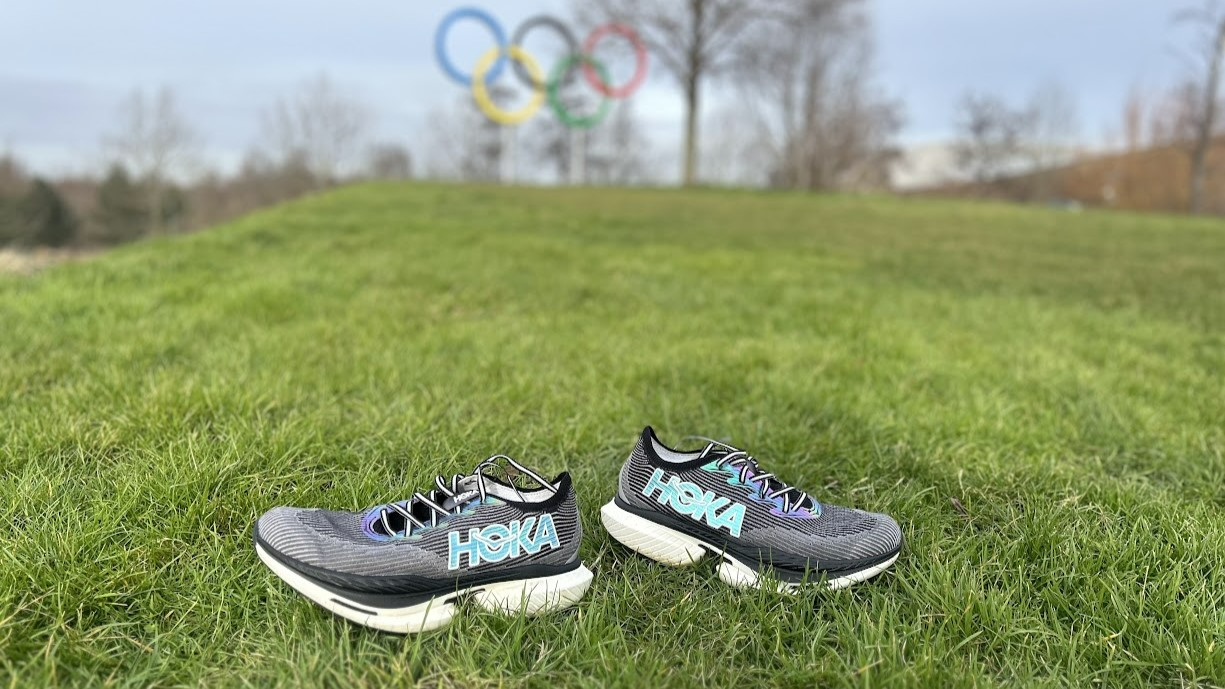
Hoka Cielo X1 review: performance
The biggest compliment I can pay the Cielo X1 is that it feels a lot like running in the Nike Alphafly. I've only used the first-generation Alphafly, but this new Hoka shoe has the same tipping-onto-your-toes feeling, thanks to the Meta-Rocker.
It's a bouncy shoe, helping you move from heel to toe and propelling you forward. The bounce is clear even if you walk around in them, but this slower pace also highlights that they can be a bit unstable at lower speeds.
But once you're running, it's a joyful experience, helping long stretches pass by in a comfortable and fun fashion. I ran 50 km in them, including a 14-mile run at my marathon pace, a track session, 10 km on a treadmill, and a 10 km race at my usual pace.
I found that it performed best on longer runs, and could still handle medium-distance sessions, but it wouldn't be my first choice for shorter runs, as the design helps protect your foot for a consistent ride on lengthier sessions.
That said, the bounciness was prominent around my knees on longer runs, and the ride can be a bit aggressive, but I never felt like my legs were in pieces after a run, which is always a good sign. The midsole was a touch firmer than the Nike ZoomX, but it was a pretty close call.
For all that I liked about the Cielo X1, I would have preferred if they'd been a bit lighter, like the excellent Rocket X2 shoes. Plus, the laces didn't always give the best lockdown, and the shoes can be a pain to get on. But those minor points aside, you get an exciting and enjoyable run in them.
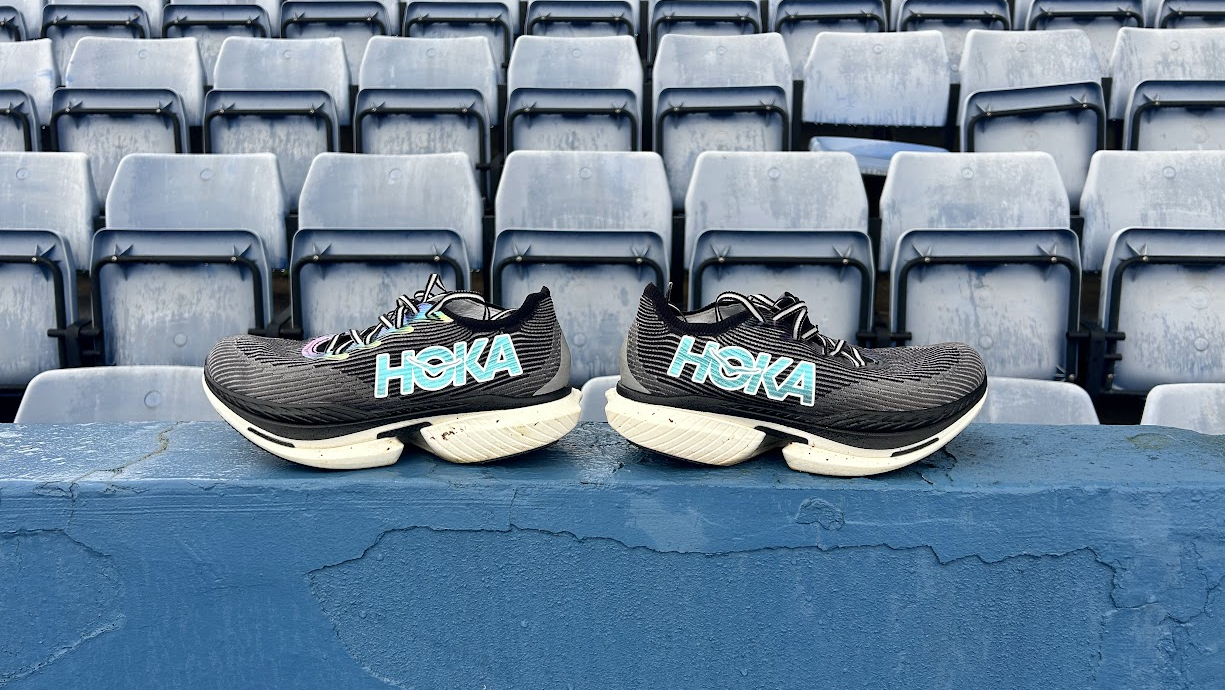
Hoka Cielo X1 review: verdict
After running 50km in the Hoka Cielo X1, I can confidently say that it's a great running shoe built for racing across extended distances and it's durable enough to handle longer training sessions, too.
It's better equipped than the Hoka Rocket X2 for longer distances, and it seems like Hoka has its sights set on creating a viable racing alternative to the Vaporfly (with the Rocket X2) and Alphafly with the Cielo X1.
These shoes have an Alphafly feel to them, which is no bad thing. So, if you're after an alternative to Nike's top marathon shoe, it's absolutely worth picking up the Hoka Cielo X1 and heading out for some serious fun.
Michael is a freelance journalist who has covered consumer technology for over a decade and specializes in wearable and fitness tech. Previously editor of Wareable, he also co-ran the features and reviews sections of T3, and has a long list of bylines in the world of consumer tech sites.
With a focus on fitness trackers, headphones, running wearables, phones, and tablet, he has written for numerous publications including Wired UK, GQ, Men's Fitness, BBC Science Focus, Metro and Stuff, and has appeared on the BBC Travel Show. Michael is a keen swimmer, a runner with a number of marathons under his belt, and is also the co-founder of YouTube channel The Run Testers.
